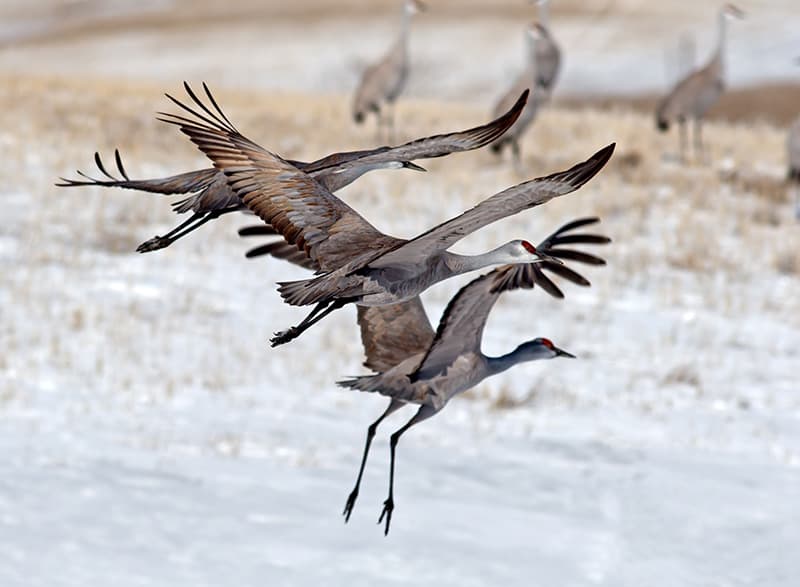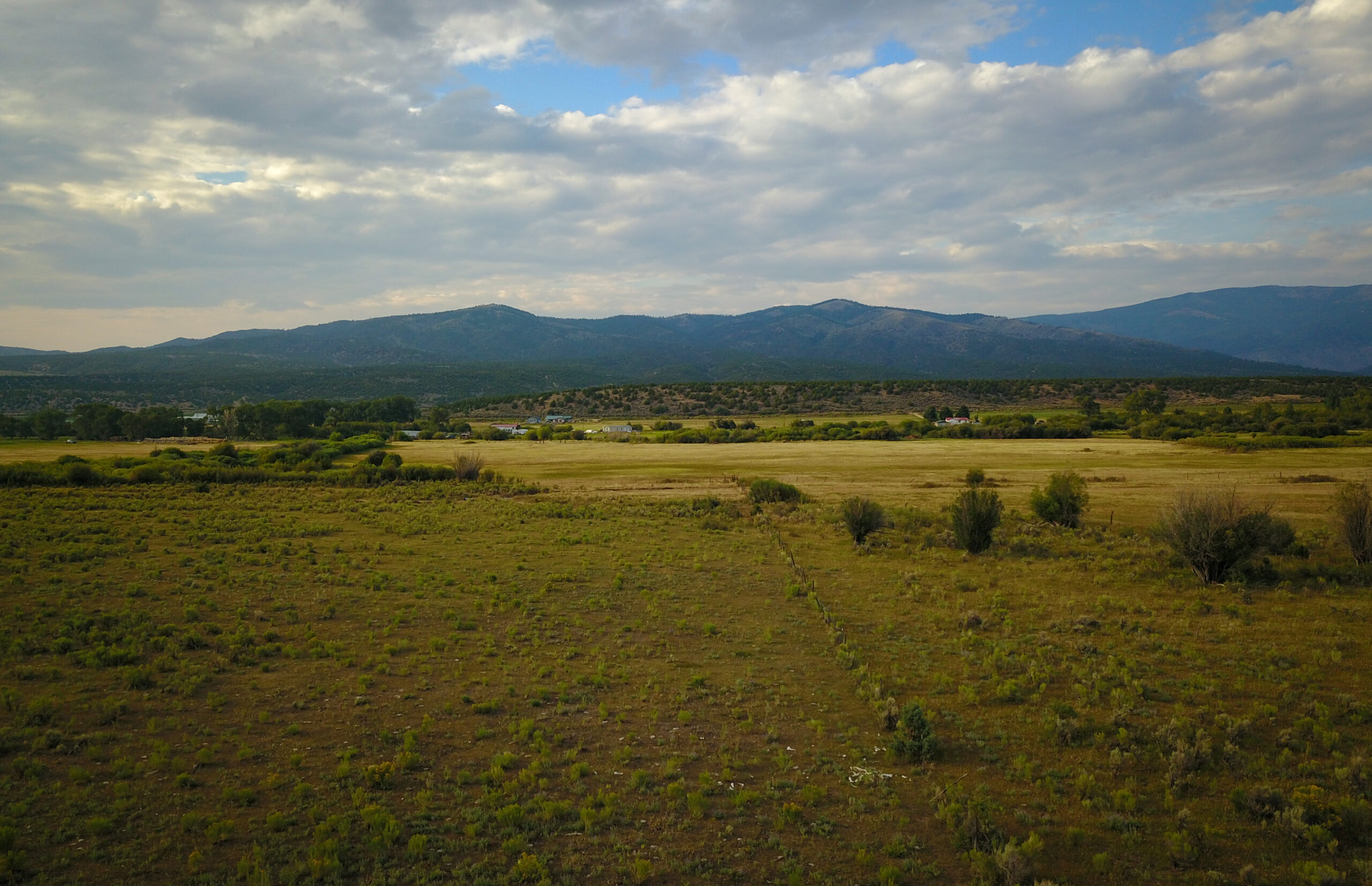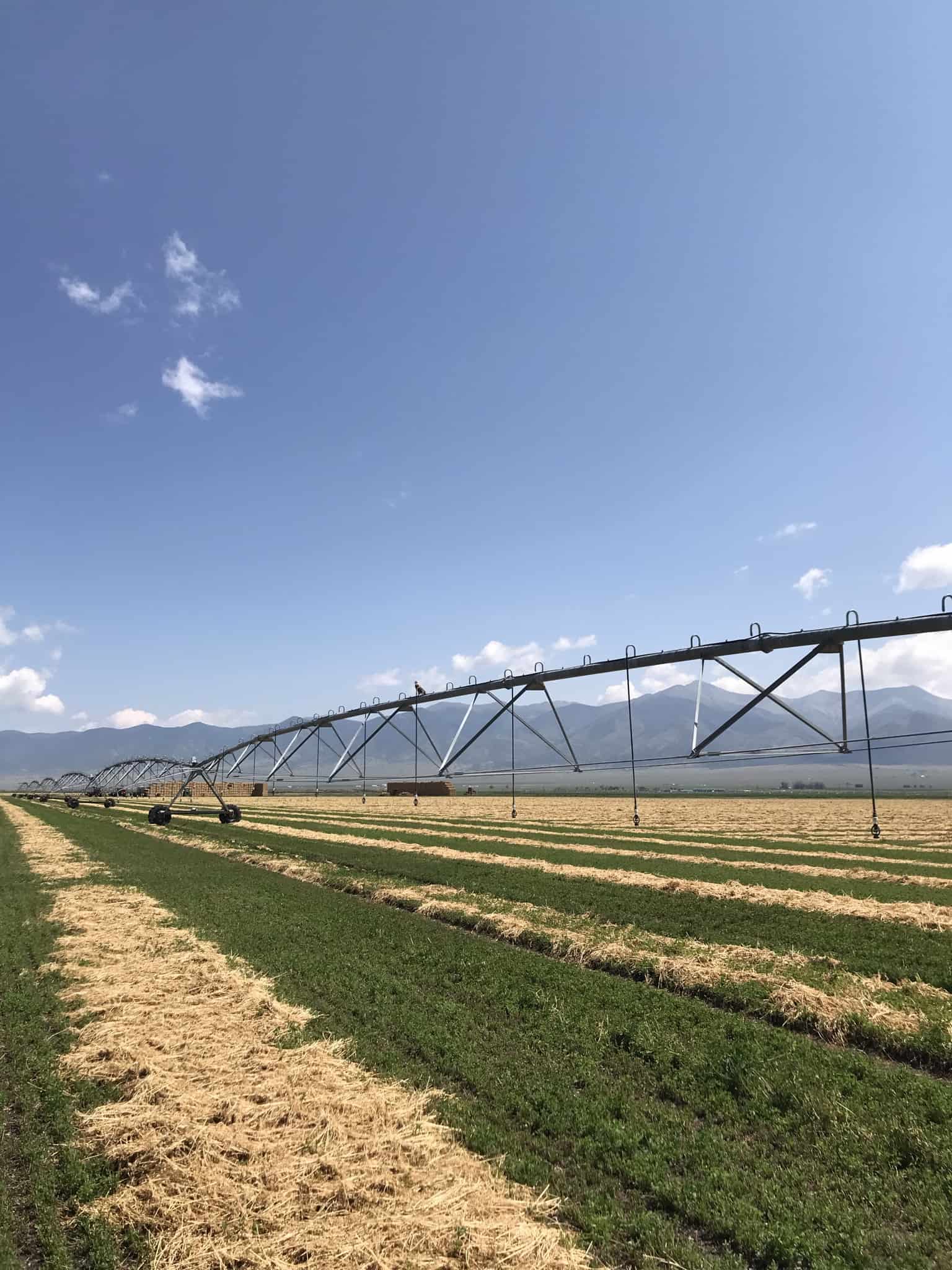peachwood farms
Drought in the san luis valley and the need for new solutions
The San Luis Valley is an area the size of Massachusetts nestled between the San Juan and Sangre de Cristo Mountain Ranges. Within its borders, the Valley harbors great diversity of natural and cultural settings. Landscape on the floor of the Valley changes dramatically with the presence of water. From its headwaters in the San Juans to the Texas coast, the Rio Grande is the nation’s second longest river and the lifeblood of the Valley’s agriculture and ecology. Canals and ditches from the Rio Grande, and the Conejos River as its major tributary, supply one of the state’s most important farming areas, famous for its potatoes, beer barley, alfalfa, and other crops. This network of river tributaries and water delivery systems also create a rich network of wetland and riparian habitat and the agricultural fields provide upland forage for migratory birds, like the Sandhill Cranes, as well as important wintering ground for mule deer and pronghorn.


The northern part of the valley is internally drained and is referred to as the “closed basin” where the water table has been very high, supporting very shallow or artesian wells. This artesian water was discovered around 1887, and within four years, approximately 2,000 flowing wells had been developed. The extensive development of the valley’s aquifers concurrent with development of a large surface-water irrigation system has created a number of hydrologic and legal problems.
The severe drought of 2002 brought the condition of the Valley’s two aquifers to the attention of the public and the Colorado legislature, leading to a mandate to replace well pumping and to bring the aquifers back to sustainable production levels. If the mandate is not met, there is a serious risk of that thousands of wells will be shutdown. Shutdown of wells by the State would be catastrophic not only for farming and ranching families but would also drastically alter the Valley’s ecology and the incredible wildlife habitat it supports.
The agricultural community proactively responded, creating subdistricts of the Rio Grande Water Conservation District, which tax themselves to reduce pumping. Progress was being made and farmers were hopeful until another major drought year in 2018. The 2018 water year affected not only surface water, but also groundwater in both the unconfined (upper, alluvial) and confined (lower, artesian) aquifers. Aquifer levels are nearly as low now as when conservation efforts began, and the water community is looking for a new tool to avoid or reduce the need for the state to intervene.
Colorado Open Lands has developed a tool that will retain the best parts of traditional conservation easements – their perpetuity and enforceable resource protection –with a new focus on groundwater pumping. This new type of conservation easement will limit well pumping to an amount that would have measurable impact for the aquifer, but also build in flexibility needed for that farmer or rancher to continue their operation. Limiting well pumping will allow the aquifers to recover and boost stream-flows across the Valley, especially on the Rio Grande and Conejos River. Higher water tables also support wetland and riparian health, as well as the flood-irrigated ranches that land trusts have traditionally focused on protecting in the area.
Peachwood Farms – first Groundwater Conservation Easement in the country
“Agricultural producers in the San Luis Valley are no strangers to dry conditions,” said Nora Flynn, Agricultural Specialist for the Colorado Water Conservation Board (CWCB). “The increasing intensity of water supply issues is leading to some impressive innovations in land and water management.”
Colorado Open Lands has been working with farmers and ranchers in the San Luis Valley for over a decade, helping landowners with conservation easements that protect their land and bring financial resources to the area. COL and the local land trust, Rio Grande Headwaters Land Trust, began to explore whether the conservation easement tool could be applied to the area’s most precious natural resource: groundwater. Irrigators, local water managers, and the state agency tasked with administering water rights all weighed in on the concept development. These conversations led COL to pioneer the use of the easement to incentivize farmers and ranchers to keep water in the ground, beginning with Peachwood Farms. Landowner Ron Bowman will be compensated for agreeing to stop irrigating his 1,800-acre farm to help stabilize water levels in the aquifer to the permanent benefit of other farmers and wildlife.
Bowman said, “If by discontinuing irrigation on my farm, it means that my neighbors may be able to keep their multigenerational farms in their families, then it feels like the right thing to do.”
Now that the conservation easement is in place, federal funds from the Natural Resources Conservation Service will help revegetate Peachwood Farms with plants that can survive drought and do not require irrigation. Senator Michael Bennet encouraged Colorado Open Lands to apply for this federal funding.


Landowner Ron Bowman

The Upper Rio Grande Basin is vital to our regional economy and provides important wildlife habitat on working lands,” said Bennet. “I’m delighted that the Colorado Open Lands’ Rio Grande Project will receive has received over $6 million in funding from the Regional Conservation Partnership Program. This will unlock an innovative and locally-developed new approach to groundwater management in an effort to sustain the local agricultural economy and maintain wildlife habitat.”
Since COL began work on this easement, the idea has begun to catch on. In May of 2022, Governor Jared Polis signed into law Senate Bill 22-28, which directs $60 million in federal COVID-19 relief funding towards compensating farmers in the San Luis Valley and the Republican River basin to support aquifer recovery, including through groundwater conservation easements. A groundwater conservation easement combines permanence with flexibility. Colorado Open Lands plans to pursue projects that reduce groundwater pumping, but allow farms to stay in operation while using less water. State Senator and local farmer Cleave Simpson was a co-sponsor of the bill and one of the first to suggest exploration of a groundwater easement with the land trusts.
“The groundwater conservation easement agreement is a permanent solution to help the San Luis Valley manage its water shortages,” said Simpson, who is also General Manager of the Rio Grande Water Conservation District. “I like solutions to help us avoid a sudden economic fallout in the valley. The groundwater conservation easement also gives farmers and ranchers more options for making money off their water rights but keeping the water in the valley.”
This funding will be disbursed by the Colorado Water Conservation Board, with guidance and recommendations from local experts.
“The Colorado Water Conservation Board recognizes the hard work that goes into pilot projects like the groundwater easement on Peachwood Farms and commends Colorado Open Lands for their leadership. Projects like this produce results that will help inform future efforts for years to come,” added Flynn of the CWCB.
A changing climate and population demand that creative conservation solutions be developed to sustain Colorado’s culture, economy, and communities. It is the hope of Colorado Open Lands that the groundwater easement tool be adopted as a model to change the trajectory of our nation’s many declining aquifers.
Colorado Open Lands Director of Conservation Sarah Parmar said, “Farmers and ranchers are on the front lines of the impacts of a changing climate and many are on the front lines of adaptation. We’re thrilled to develop this new tool to support those farmers and ranchers as they work to bring the aquifers they depend on back into balance.”
